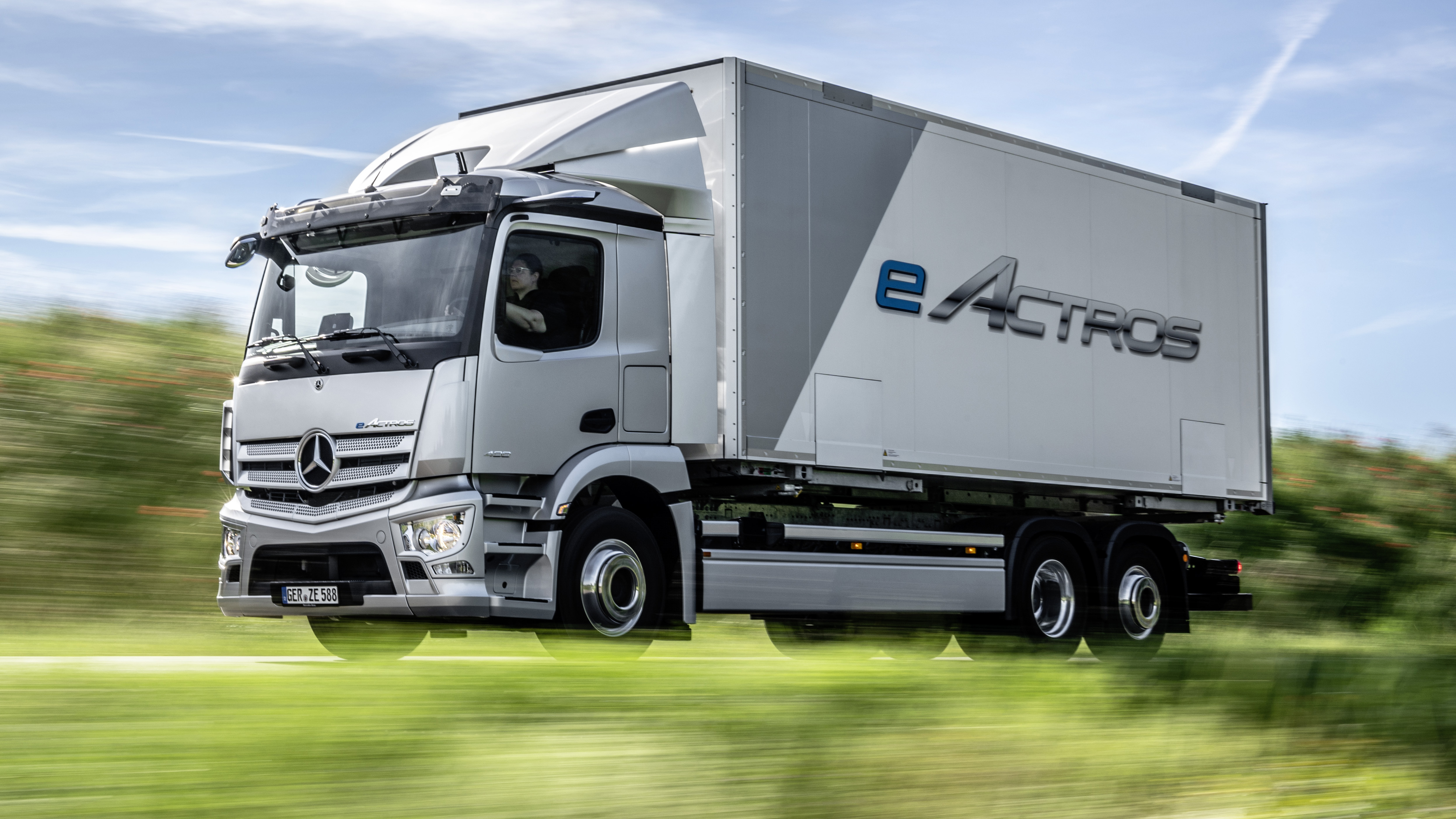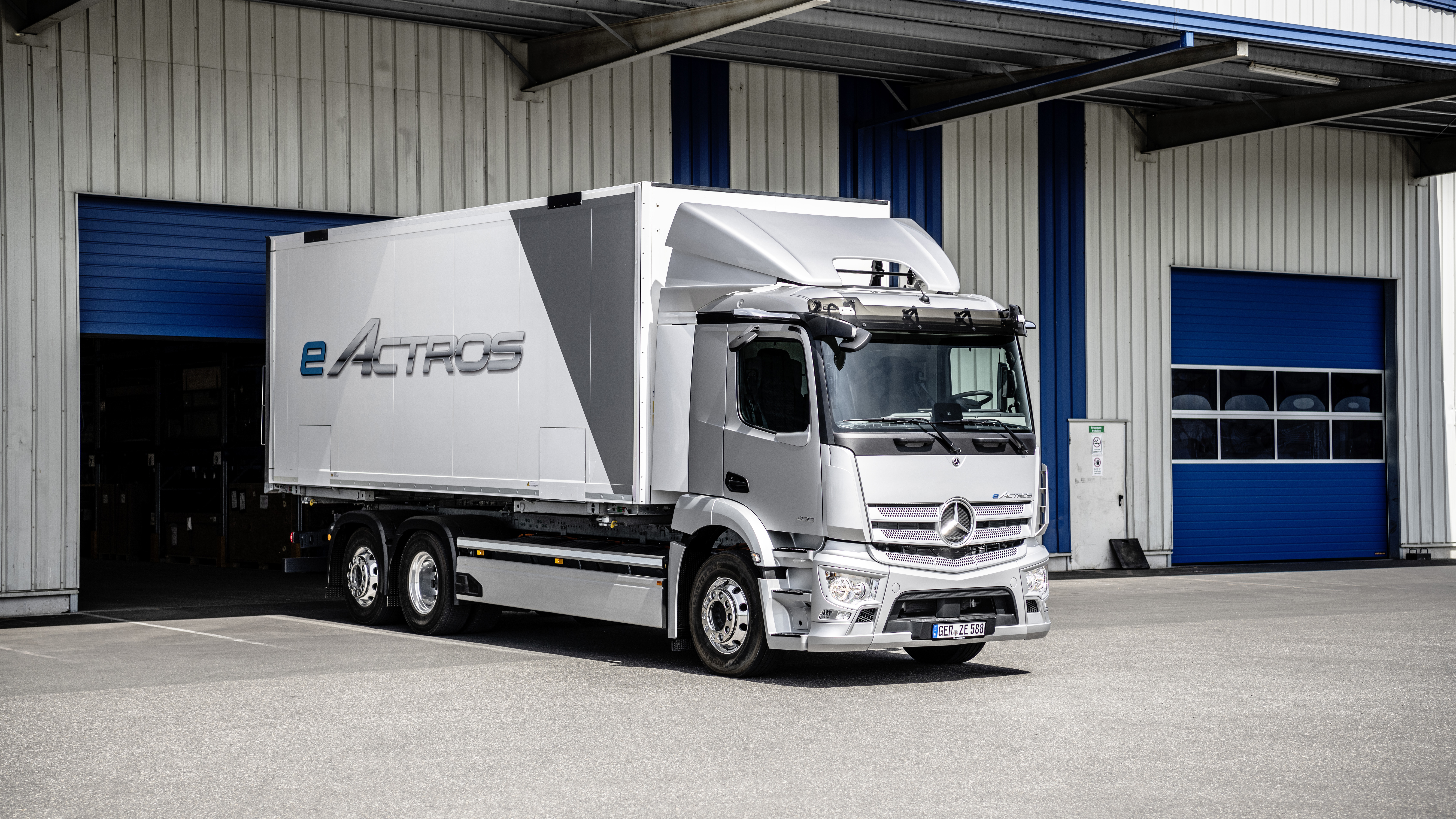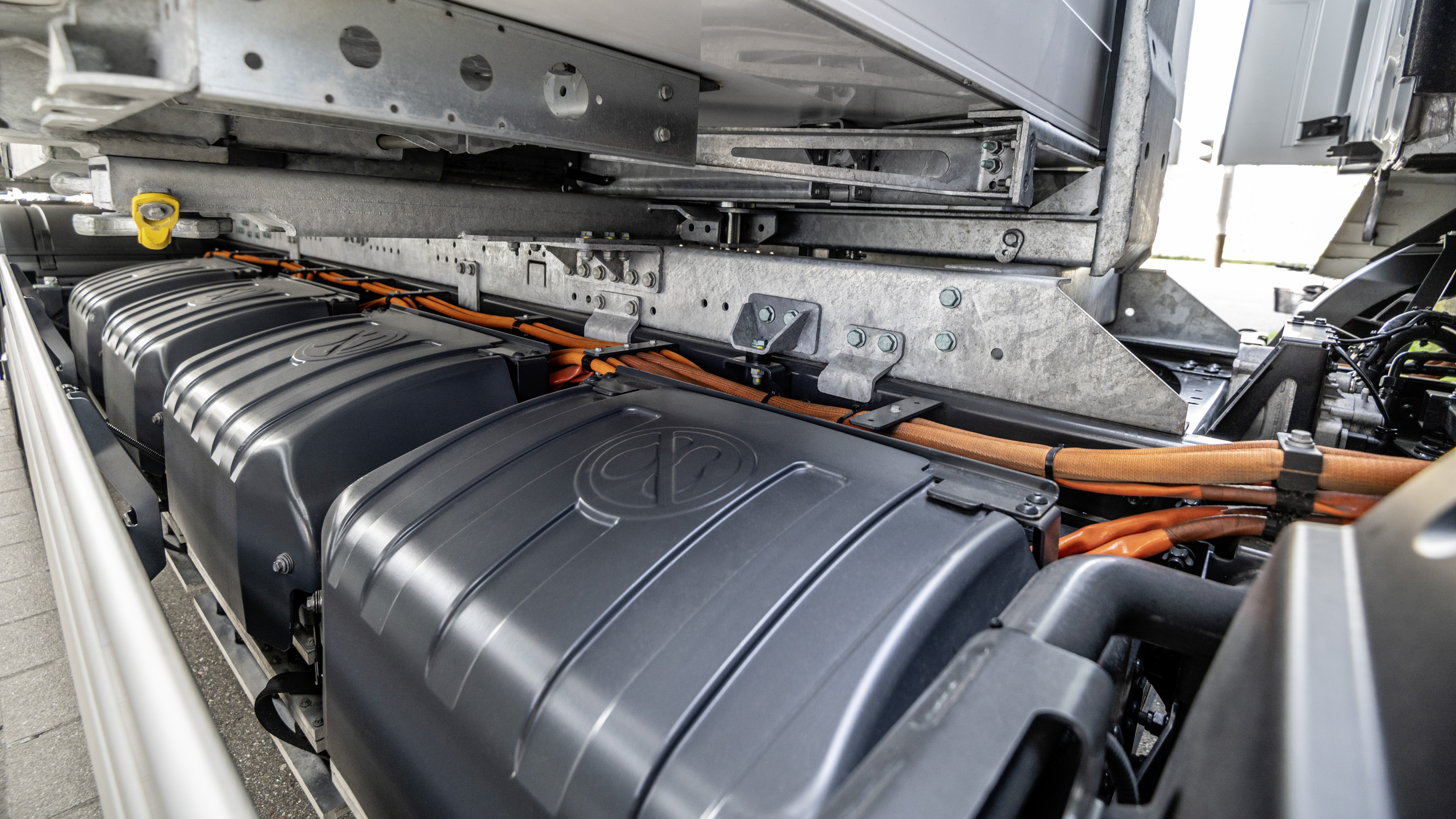
This electric truck needs a 420kWh battery to do 250 miles
The new Mercedes eActros demonstrates the problems facing electric HGVs
Welcome to the new Mercedes eActros – an electric HGV that is, in many ways, very clever and undoubtedly cutting edge. But it does highlight a problem facing makers of zero-emission commercial vehicles – namely the physical size, weight and capacity of the batteries.
To give the eActros a range of up to 250 miles, Mercedes has had to equip it with four batteries totalling 420kWh in capacity. The Tesla Semi is expected to use an even bigger 500kWh battery.
For context, the battery that gives the Mercedes EQS a WLTP range of 477 miles is 108kWh. Meanwhile the Renault Zoe manages to extract a claimed 245 miles from 52kWh of battery, while the little Mini Electric needs 33kWh to travel just 145 miles.
420kWh of battery takes up some serious space and, though Mercedes doesn’t say exactly how much, probably weighs a couple of tonnes (if not more). And that’s before you get into how long it takes to charge.
That’s why as well as battery-electric, many truck-makers (such as Mercedes) are looking at hydrogen too. Some argue that hydrogen is better suited to long-haul heavy trucking – chiefly because hydrogen trucks can often travel further than battery-electric ones and can be refuelled much more quickly – whereas batteries are more appropriate for short-haul stuff.
We’re not going to get into the many advantages and disadvantages of each tech here. But either way it seems in the short-medium term zero-emission trucking will favour a mix of the two technologies. Same goes for cars.
Top Gear
Newsletter
Thank you for subscribing to our newsletter. Look out for your regular round-up of news, reviews and offers in your inbox.
Get all the latest news, reviews and exclusives, direct to your inbox.
Trending this week
- Long Term Review
Life with a 500bhp BMW 550e: do you really need an M5?
- Car Review
Vauxhall Mokka










